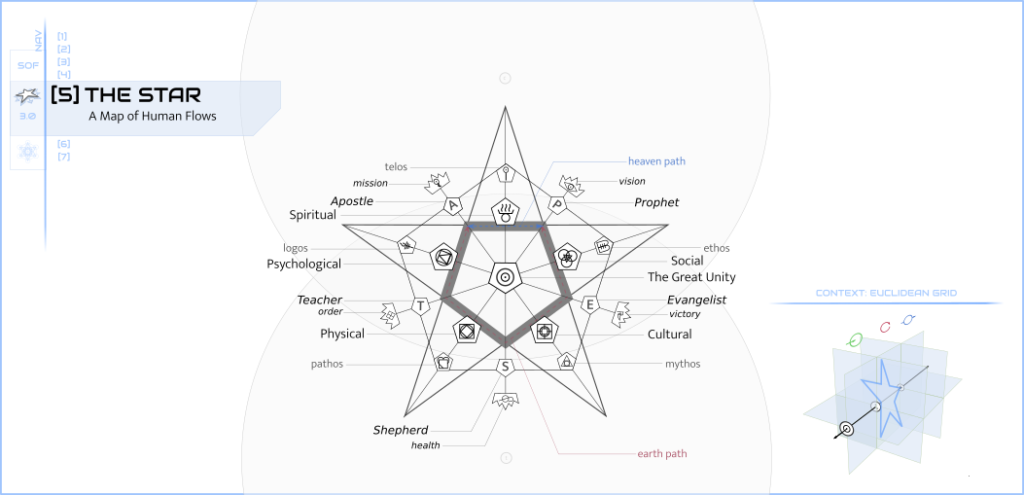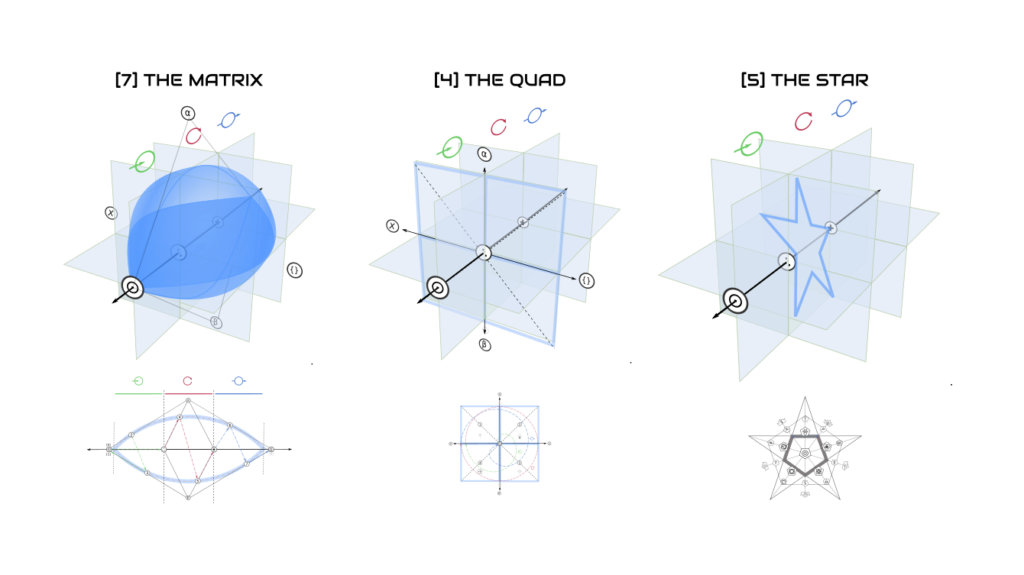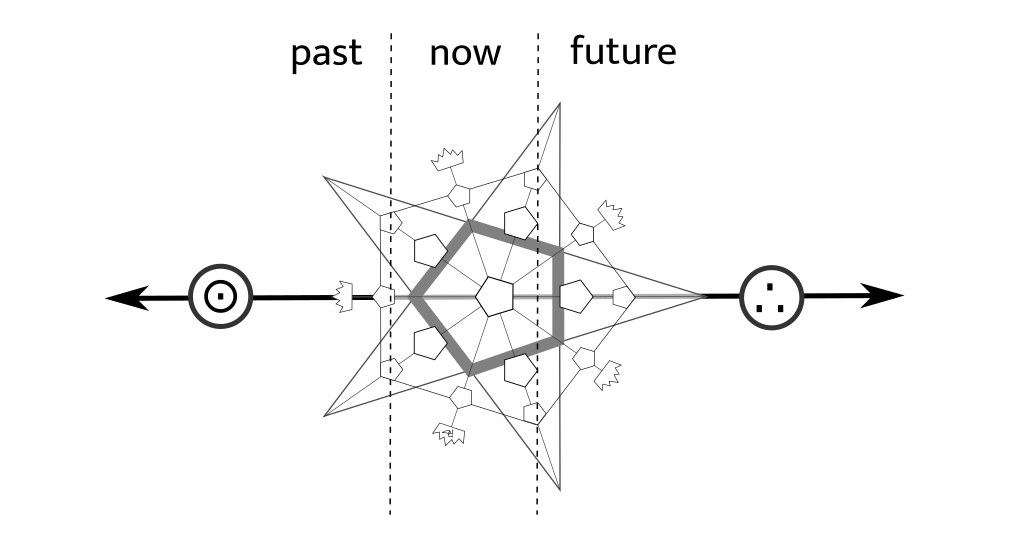[5-7] The Starship
The Starship is an integration of three frames: [4] The Quad, [5] The Star, and the [7] Emergent Leadership variant of [7] The Matrix. Together, these frames describe the complex dynamics of who does what, when to produce change in an organization or people group — in the most simplified view of the essential elements and dynamics.
The Three Frames
Emergent Leadership: The Process of Change

The Quad: The Cycle of Growth

The Star: A Map of Roles and Domains

Integration
How these three frames fit together requires a 3-D understanding of the common context of each.

The three frameworks align to each other based on 5 critical elements:
- The Prime (⊙): the central organizing purpose and center of gravity of for all frames. Also for the change and the organization.
- Alpha (α): the push for change; what the people of the organization want
- Beta (β): the pull of demands internal and external; what the situation is
- Unit (x): the individual agent who is a stakeholder in the change
- Set ({ }): the population of all agents who are stakeholders in the change
The role each frame plays if you put them together:
- [7] Emergent Leadership: lays out the environment for change and the zones or steps of the process of change and its diffusion through its three phases.
- [4] The Quad: shows the growth cycle necessary for the process. This cycle completes once in each of its three phases, but would also complete many times in numerous sub-processes.
- [5] The Star: shows how the work must progress through the 5 human domains and how the 5 Equipping Roles facilitate and build organizational capacity for the work of the change.
Who Drives?
This depends on what the domain the Prime belongs to. There are three time-orientations to the Prime present in an organization: past, now, and future:

The Star should always travel “point first” as the process evolves, with the point of the domains to which the Prime belongs traveling along the Prime line of the system. This means no single Equipping Role can accurately see the future on their own. Instead, it is discerned in conversation and collaboration between two roles, always those immediately on either side of the leading domain.
Time orientation by leading domain:
| Leading Domain | Future | Now | Past |
|---|---|---|---|
| Spiritual | A-P | T-E | S |
| Psychological | A-T | S-P | E |
| Physical | S-T | A-E | P |
| Cultural | E-S | T-P | A |
| Social | P-E | A-S | T |
Who Does QC?
Quality Control (QC) of the process and products is a broad area of responsibility. Since QC always has a strong connection to the past,1 whatever Equipping Role is in the past orientation has a large role in QC throughout the evolution of the system.
Additionally, the Apostle and Prophet can insure quality control during workflows by consulting “across the star” with roles not actively in the current workflow (see QC Consult column on domain-specific Starship charts). This accomplishes too things: (1) it avoids Prime-shift in the direction of the workflow2 and (2) it aligns current work to future work by checking with those who will have later responsibilities in the workflow.
Who Does What, When?
Roles at any point-in-time any project are based on three things:
- Who does what most naturally or most efficiently?
- Who can see what (perception and focus) at which point in the process?
- Who is the best to advance capacity and growth process?
- Who can best help the process and product stay on track?
Who does what most naturally or most efficiently?
Managed by natural roles according to [5] The Star.
Who can see what (perception and focus) at which point in the process?
Managed based on leading domain’s Visibility by Role (see domain specific Starships below).
Who is the best to advance capacity and growth process?
Managed based on leading domain’s Responsibility by Role – Dev. Workflow (see domain specific Starships below).
Who can best help the process and product stay on track?
Managed based on leading domain’s Responsibility by Role – QC Consult (see domain specific Starships below).
Domain-specific Starships
References & Notes
- If something has been done before, all new work must at least meet the standard of the past. If something new is being done, it must provide benefits at least equal to if not superior to the old alternative in order to be of value. This makes the past central to QC in the process and products of all systems.
- For example, in the Spiritual project, the first development workflow is A→T→S. The partnership of the Apostle and Teacher can Prime-shift the project to a Psychological project because they share that Prime, resulting in a project that produces intellectual instead of spiritual end-products. The antidote to this for the Apostle to QC Consult with the Prophet and the Evangelist. The Prophet’s vision, focused on the Spiritual and Social domains and the Evangelist’s desire to see people in victory will keep the project from shifting into intellectual end products.

